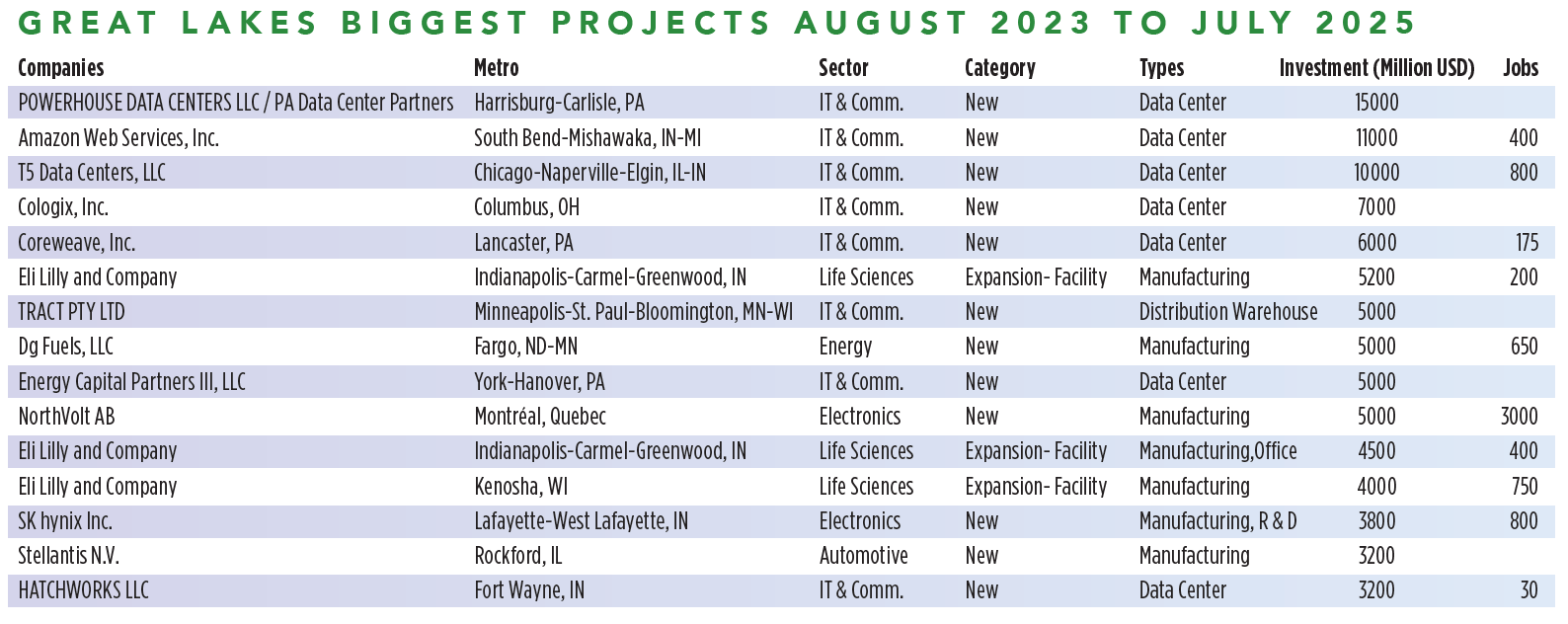When you think about the Great Lakes, what naturally comes to mind is the vast ecosystem supported by these five bodies of water that collectively account for one-fifth of the planet’s supply of freshwater.
The drainage basin from these lakes alone is larger than most U.S. states. Because of that, many lucrative economic development opportunities are just waiting to be harvested. Among them is the rapidly growing mass timber industry in the region.
On September 17, Element5 announced a $107 million investment to expand its mass timber operations in St. Thomas, Ontario. The project will double the site’s production capacity and create 150 new jobs.
By increasing production of Glulam and cross-laminated timber (CLT) made from lumber sources in Northern Ontario, Element5 will strengthen the province’s forestry sector while reducing reliance on imported building materials. Invest Ontario is supporting the project with a loan of up to $8 million.
Because St. Thomas is located just 30 minutes from the shores of Lake Erie and right in the middle of Lakes Huron, Ontario and Erie, any timber mill in the area faces strict regulation designed to promote sustainable production practices.
“Creating policies that retain young graduates and attract new residents is essential.“
— Darin Buelow, Principal, Deloitte Consulting LLP
That’s where policy comes into play. Throughout the two Canadian provinces and eight U.S. states within the Great Lakes region, there are a host of policy issues impacting economic development on both sides of the border. These issues include, but are not limited to:
- The ongoing need to revitalize the regional economy in both nations.
- The need to attract, recruit, train and retain skilled workers to fulfill the production needs of the thousands of factories in the region.
- Ongoing population loss that limits the ability to find qualified workers.
- The need to modernize and upgrade infrastructure at all levels including roads, airports, waterways, seaports, bridges, power plants, transmission lines, fiber-optic cables to support production operations and logistics networks.
- Regional and cross-border cooperation.
- Sustainability issues that impact the supply and quality of freshwater in the Great Lakes and the development surrounding them.

source: Conway Projects Database
A Call for Regional Branding
Darin Buelow, principal for infrastructure and real estate for Deloitte Consulting LLP in Chicago, says there is a continuing need throughout the Great Lakes region to align multi-state infrastructure and economic development policies to strengthen the region’s competitiveness. This includes, he says, “promoting regional branding to attract talent and investment and strengthening U.S.–Canada cooperation on trade, energy and Great Lakes stewardship.”
On the talent and population front, he adds that “addressing brain drain by creating policies that retain young graduates and attract new residents” is essential.
Tim Feemster, CEO and managing principal of Foremost Quality Logistics in Dallas, says the entire region faces the daunting challenge of stemming the tide of population migration to Texas and the Southeast. He also cites the ongoing trade tariff squabbles and “lack of seasonal workers for the agricultural business” as critical challenges.
Feemster cites data that reveal the consequences of population loss in just one state — Illinois:
- Loss of Congressional Seats: The continued population decline led Illinois to lose a congressional seat after the 2020 Census.
- Weakened Economy: A shrinking population, especially among workers, can strain the state’s economy and ability to fund public services and debts.
- Demographic Concerns: The loss of young people and working-age individuals raises long-term concerns about the state’s future.
Brain Drain Continues
Region-wide, the population losses are mounting. According to the U.S. Census Bureau, Illinois experienced a net migration loss of 56,000 people in 2024. That was third-most in the nation. Meanwhile, Michigan lost 8,000 people, Wisconsin lost 6,000, New York lost 121,000 (second-most in the country), and Pennsylvania lost 12,000. The only state in the Great Lakes region to show a net gain in migration last year was Indiana, with an increase of 4,000 residents.
According to the Ontario Ministry of Finance, in the second quarter of 2024, “Ontario saw a net interprovincial migration loss of 9,211 people to the rest of Canada, compared to a net loss of 10,151 people in the same quarter of 2023. Ontario experienced net losses in its exchanges with 8 of the other 12 provinces and territories” in 2024, per the ministry.
Quebec, meanwhile, is trending in the opposite direction. According to the Quebec Institute of Statistics, “Québec’s migration losses to the rest of Canada are estimated at 1,900 people in 2024, among the lowest in recent decades. The deficit has gone down significantly since the mid-2010s, when it stood at about 14,000 people annually.”

